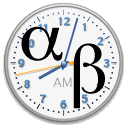|
In this tutorial we will estimate the extra fractions required to compensate for acute effects (e.g. tumor control) when a standard course is split into 2 parts with a 3 week gap between the parts. The α/β ratio is assumed to be 10 for acute effects and 3 for late effects.
- Calculate the target BED by entering as course #1 of the IMR table the standard course that would normally be delivered, for example, 30 fractions of 200 cGy, beginning on March 31st, but do NOT include course #1 in the plan. Note that the BED for acute effects for the standard course is 72.00 Gy(10) as highlighted in red text in the A BEDn column and that the Incl. checkbox for course #1 is NOT checked.
- Include as course #2 (green) of the IMR table the first portion of the split course. For example, 15 fractions of 200 cGy, beginning on March 31st.
- Include as course #3 (blue) of the IMR table the tentative second portion of the split course following the gap. For example, 15 fractions of 200 cGy, beginning on May 12th.
- Observe that although a gap of 23 days is listed in the Gap column of the IMR table, the fractionation and BED delivered by Parts 1 and 2 exactly matches the standard course. This is because repopulation is not yet being accounted for in the calculation. By default, repopulation is not enabled in TDFPlan because it requires making some assumptions about the repopulation parameters of the LQ model. Scroll down this page for an example of how to include repopulation in the BED calculation.
|
